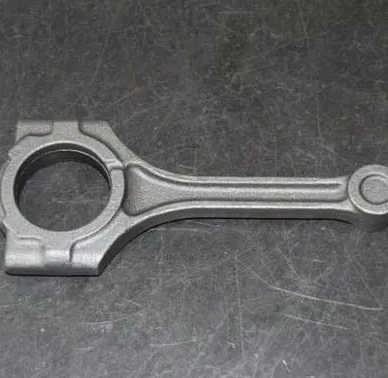A cast connecting rod has unique properties that make it a suitable option for certain engine applications. In this article, we will discuss the features and benefits of cast connecting rods, the casting process, and the situations in which they are commonly used.
The Casting Process Casting is a manufacturing process in which molten metal is poured into a mold and allowed to cool and solidify, taking the shape of the mold. This process is widely used for producing connecting rods because it offers several advantages, including the ability to create complex shapes and the potential for cost-effective mass production.
Features and Benefits of Cast Connecting Rods Cast connecting rods have several features and benefits that make them a viable option for specific engine applications:

- Affordability: Casting is a cost-effective manufacturing process, allowing for the production of large quantities of connecting rods at a lower cost per unit. This makes cast connecting rods an attractive option for budget-conscious consumers and manufacturers.
- Durability: A cast connecting rod has a dense structure that provides adequate strength for many standard engine applications. These rods can withstand moderate loads and stresses without compromising their performance.
- Versatility: The casting process enables manufacturers to produce connecting rods with various designs and specifications. This versatility allows for the production of connecting rods tailored to specific engine applications and requirements.
Common Applications of Cast Connecting Rods While cast connecting rods may not be the ideal choice for high-performance or racing applications, they are well-suited for several other uses:
- Daily-driven vehicles: A cast connecting rod has sufficient strength and durability to meet the demands of most daily-driven vehicles, making them a suitable choice for engines in these applications.
- Light-duty applications: Cast connecting rods are ideal for engines used in light-duty applications, such as lawn equipment, small generators, and pumps.
- Budget engine builds: For individuals looking to build an engine on a budget, cast connecting rods offer a cost-effective solution without sacrificing too much performance.
Conclusion A cast connecting rod has unique features and benefits that make it an attractive option for certain engine applications. The affordability, durability, and versatility of cast connecting rods make them a suitable choice for daily-driven vehicles, light-duty applications, and budget engine builds. By understanding the advantages and limitations of cast connecting rods, you can make informed decisions about the best connecting rod options for your specific engine requirements.